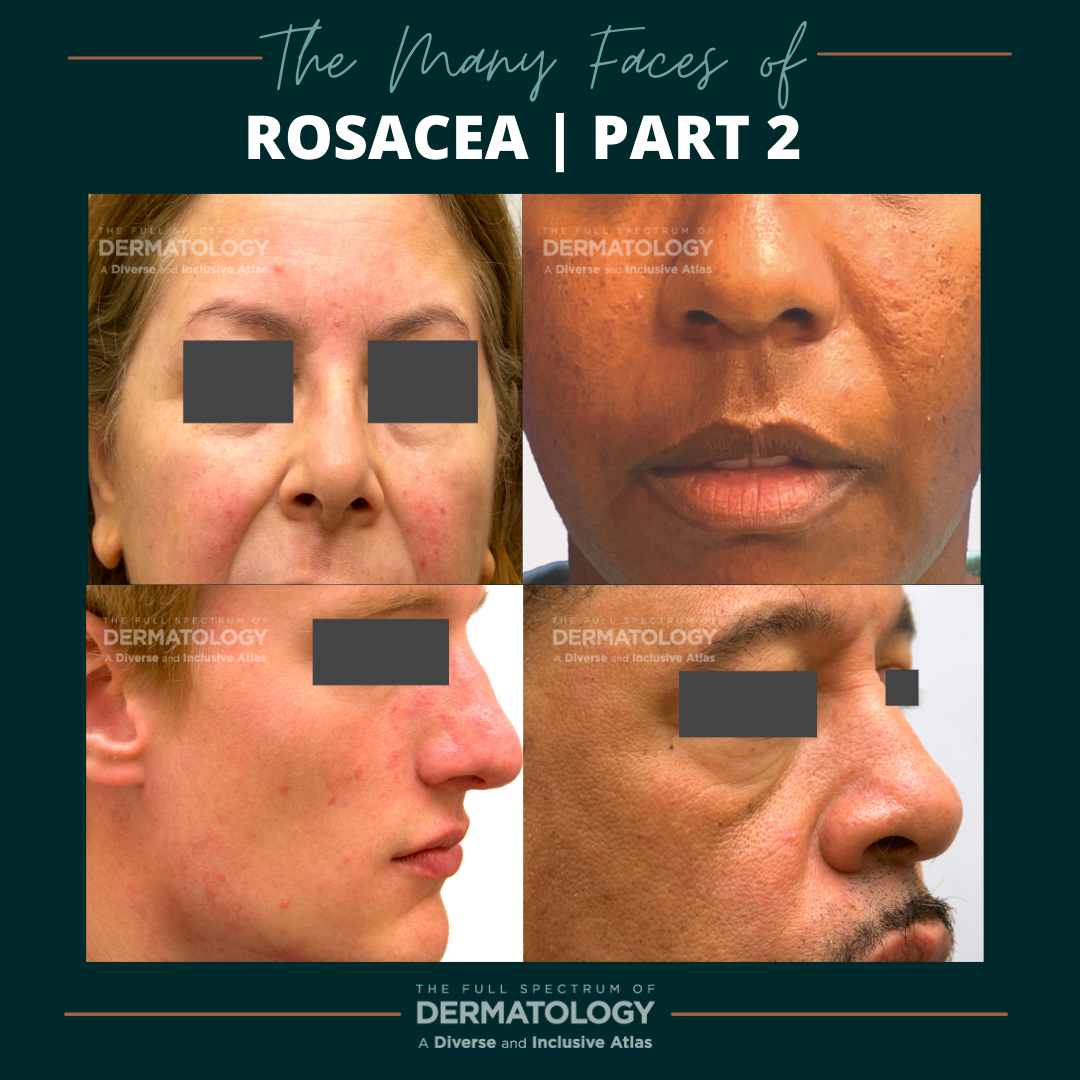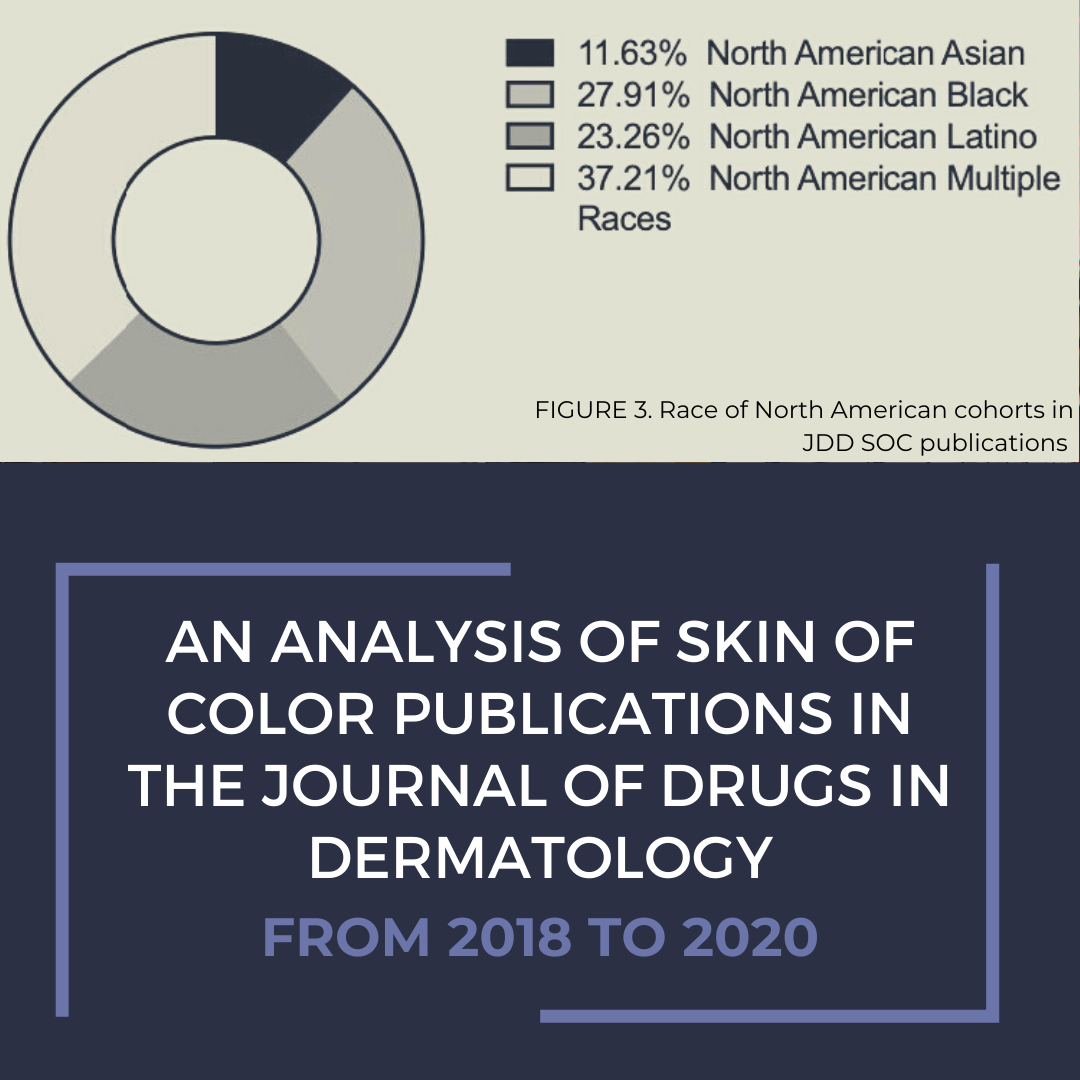The Many Faces of Rosacea | Part 2
158481584815848 Our new series, "The Many Faces of", will showcase side-by-side images of some of the most commonly seen dermatology conditions in an array of skin tones and briefly highlight nuances in clinical presentation. All images featured in the series are part of The Full Spectrum of Dermatology: A Diverse and Inclusive Atlas, a resource developed by co-editors Misty Eleryan, MD, MS, and Adam Friedman, …
Our new series, "The Many Faces of", will showcase side-by-side images of some of the most commonly seen dermatology conditions in an array of skin tones and briefly highlight nuances in clinical presentation. All images featured in the series are part of The Full Spectrum of Dermatology: A Diverse and Inclusive Atlas, a resource developed by co-editors Misty Eleryan, MD, MS, and Adam Friedman, …
 Our new series, "The Many Faces of", will showcase side-by-side images of some of the most commonly seen dermatology conditions in an array of skin tones and briefly highlight nuances in clinical presentation. All images featured in the series are part of The Full Spectrum of Dermatology: A Diverse and Inclusive Atlas, a resource developed by co-editors Misty Eleryan, MD, MS, and Adam Friedman, …
Our new series, "The Many Faces of", will showcase side-by-side images of some of the most commonly seen dermatology conditions in an array of skin tones and briefly highlight nuances in clinical presentation. All images featured in the series are part of The Full Spectrum of Dermatology: A Diverse and Inclusive Atlas, a resource developed by co-editors Misty Eleryan, MD, MS, and Adam Friedman, … 

 Our new series, “The Many Faces of”, will showcase side-by-side images of some of the most commonly seen dermatology conditions in an array of skin tones and briefly highlight nuances in clinical presentation. All images featured in the series are part of The Full Spectrum of Dermatology: A Diverse and Inclusive Atlas, a resource developed by co-editors Misty Eleryan, MD, MS, and Adam Frie …
Our new series, “The Many Faces of”, will showcase side-by-side images of some of the most commonly seen dermatology conditions in an array of skin tones and briefly highlight nuances in clinical presentation. All images featured in the series are part of The Full Spectrum of Dermatology: A Diverse and Inclusive Atlas, a resource developed by co-editors Misty Eleryan, MD, MS, and Adam Frie …  INTRODUCTION
As the United States population becomes increasingly diverse, it is exceedingly important for dermatologists to be knowledgeable about treating patients with skin of color (SOC). The published literature is an especially valuable resource for treating SOC. Many prevalent dermatological conditions, such as acne vulgaris, atopic dermatitis, and psoriasis, differ histologically and/ …
INTRODUCTION
As the United States population becomes increasingly diverse, it is exceedingly important for dermatologists to be knowledgeable about treating patients with skin of color (SOC). The published literature is an especially valuable resource for treating SOC. Many prevalent dermatological conditions, such as acne vulgaris, atopic dermatitis, and psoriasis, differ histologically and/ …  Our new series, "The Many Faces of", will showcase side-by-side images of some of the most commonly seen dermatology conditions in an array of skin tones and briefly highlight nuances in clinical presentation. All images featured in the series are part of The Full Spectrum of Dermatology: A Diverse and Inclusive Atlas, a resource developed by co-editors Misty Eleryan, MD, MS, and Adam Friedman, …
Our new series, "The Many Faces of", will showcase side-by-side images of some of the most commonly seen dermatology conditions in an array of skin tones and briefly highlight nuances in clinical presentation. All images featured in the series are part of The Full Spectrum of Dermatology: A Diverse and Inclusive Atlas, a resource developed by co-editors Misty Eleryan, MD, MS, and Adam Friedman, …  Suncare is important for every skin tone.
The risk of sunburn and skin cancer correlate with skin type – not ethnicity.1
Ethnicity does not confer skin type.
Our population is changing rapidly, and within the next few decades minority populations will become the majority.1,2
African Americans, Asians, Hispanics, Middle Easterners, Asian Pacific Islanders, Native Americans, or individuals …
Suncare is important for every skin tone.
The risk of sunburn and skin cancer correlate with skin type – not ethnicity.1
Ethnicity does not confer skin type.
Our population is changing rapidly, and within the next few decades minority populations will become the majority.1,2
African Americans, Asians, Hispanics, Middle Easterners, Asian Pacific Islanders, Native Americans, or individuals …